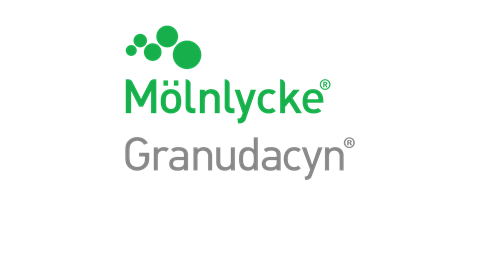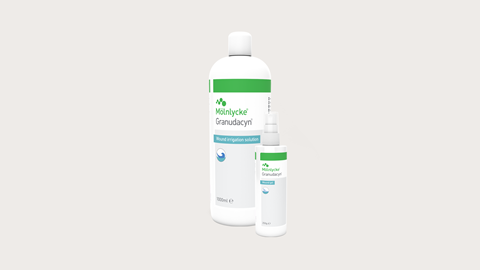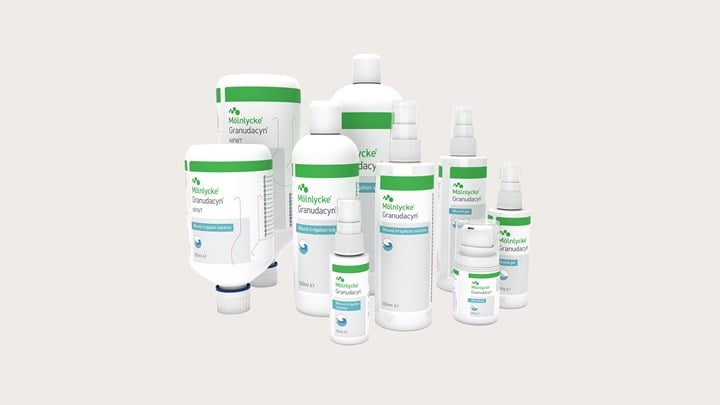
In managing wounds it remains a common practice to either use soap and water or stronger solutions. The problem is that soap and water are ineffective against some pathogens whereas many stronger solutions potentially disturb the healing process, and potentially damage human cells.
Granudacyn® is your go-to wound cleanser – cleaning wounds, supporting healing.
.
Did you know.....
that wound cleansers support wound healing by removing
local barriers and reducing the risk of infection?
Granudacyn® is an irrigation solution, safely preserved by hypochlorous acid (HOCl). It is used for cleansing and moisturising chronic, acute, surgical and contaminated wounds as well as for first- and second-degree burns. It can also be applied on sensitive tissues such as cartilage, tendons, ligaments and bones

-
Effective on all types of wounds
Granudacyn can be used on all chronic wounds, including diabetic foot ulcers, pressure ulcers and venous leg ulcers. Additionally, it can be used on acute and contaminated wounds as well as first- and second-degree burns. - Better care, better quality of life
Tackling infection while not interrupting the natural healing process is important for patient wellbeing and supports healing. - Long storage, always at hand
Granudacyn can be stored at room temperature after opening for multi-patient use up to 90 days (gel) and 60 days (solution).
Apply Granudacyn® to the wound bed before cleaning the wound. The solution does not require neutralisation or rinsing, and can be used for moistening the wound dressing and moisturising the wound itself.
|
The presence of HOCl in the solution acts as a preservative, ensuring the safety of the product. The bioburden tests, conducted according to guideline, consistently confirm the absence of any impurities. This indicates that there are no bacteria present in our solution, ensuring the purity of our product. |
Granudacyn® facilitates the mechanical removal of microorganisms and cell debris |
Setting up the body to heal
Granudacyn is not cytotoxic and doesn't cause irritation
Biocompatible
Granudacyn is proven to be biocompatible, meaning that it has a positive benefit/risk ratio
 Granudacyn
Granudacyn
Related products
Irrigation solution and gel for cleaning, moistening and rinsing.
Find your Granudacyn products'References'






